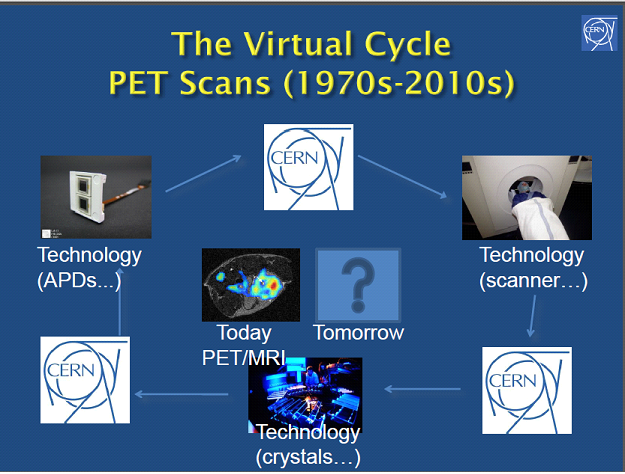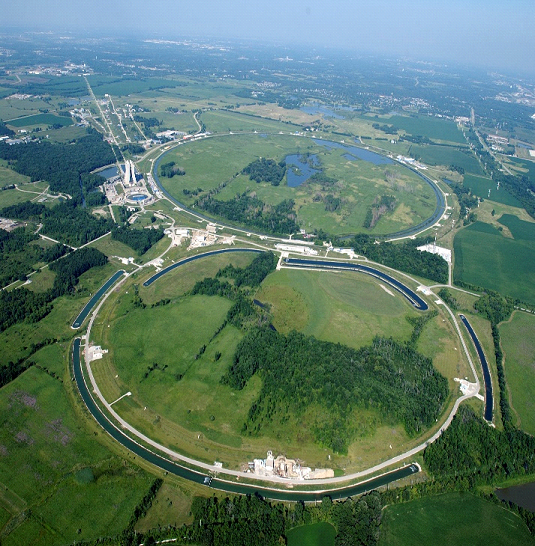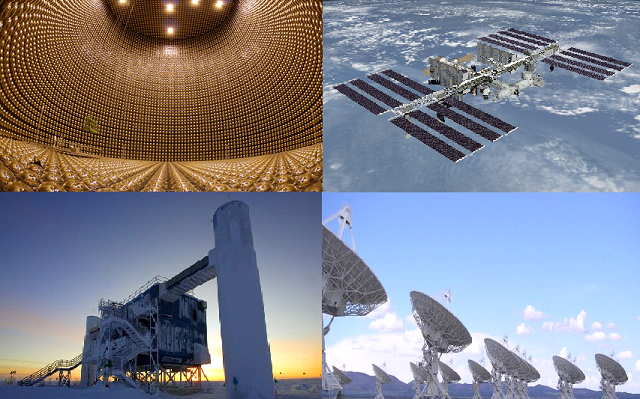*Reflections from CERN Philippines School
If you have read or watched Angels and Demons, you must have heard of the research facility called CERN. A lot of people think, especially science fans, that it is the coolest place on earth. Well, some part of it is. In fact that region where the magnets need to be cooled is maintained at a temperature of 1.9 K or -271.25 degrees Celsius, making it the coldest place in our galaxy. It is even colder than the average temperature of space, which is 2.7 K. The magnets are enclosed in a huge 27-km ring under some parts of France and Switzerland. This is where they accelerate protons close to the speed of light and then smash them and scour the rubble. Ultimately, they are trying to understand what we are made of by replicating the conditions of the early universe.

CERN has also made it to the headlines of news around the world when they announced the discovery of the (or a) Higgs Boson in 2012. Two independent research groups in the Large Hadron Collider, the Compact Muon Solenoid (CMS) and ATLAS Experiments, both found a signature of the Higgs with each experiment having a 5 sigma level of certainty. This means that there is a 1 in more than a million chance that even if there is really no Higgs, the data would look as if there is one. To further simplify it, the chances of getting a Higgs signal when there really is none, is very small. Scientists do this to make sure that the “positive” signal they got was not just a product of chance.
I am assuming that some of the public excitement surrounding this news was due largely to the fact that it was nicknamed the ‘God particle’. Some say that this nicknamed comes from the fact that the theoretical Higgs particle gives mass to other particles, although the true story behind the nickname is actually more interesting than this. It used to be called the ‘toilet particle’ and then the ‘god damned’ particle because it was very hard to find. Some editors just decided to drop the damned in ‘god damned’ to make the term more palatable to popular sensibilities. One of the big reasons why the Large Hadron Collider was built was to increase the energy scales so that they will have a bigger chance of finding it.
So how much does this huge search for such minute particles cost? It’s roughly $9B. Many people find this 9-billion price tag preposterous. I would never really shout that word myself since I have long been a fan of high energy physics. However, I, like other people, have also wondered if that money could have been used for something else more practical.
For us scientists and science fans, we cannot doubt the romance of satisfying one’s curiosity and learning more about nature, but we cannot help but ask if this investment is worth it at all. So what if the Higgs was discovered? Like what Dr. Joey Balmaceda, Dean of the College of Science of UP Diliman said in his closing address for the CERN School Philippines, “The Higgs boson will not eradicate poverty, solve our traffic problems, cure disease, or mitigate the effects of global warming.” It has no use. At least not yet, he added.
The “virtual” cycle

The cost of the Large Hadron Collider would have given 100 new light rail vehicles (LRVs) for the MRT1. That would have helped alleviating our transportation woes in the metro. We just know is that hundreds of scientific publications on fundamental science have been made possible because of the energy scales it can reach. Yes, it does not give us anything practical yet. But perhaps we can look back in time and look at Einstein for example. When he made the General theory of relativity (GR) nobody thought, not even him, that it was for something useful. However, it is GR that currently allows us to have GPS devices and satellites, among other things. When the US first sent men to the moon, there was no practical incentive but they have sparked the imagination of many around the world, which lead to a generation of young kids wanting to become scientists and engineers. There are a lot of other examples in history, but even these examples are no guarantee that all fundamental research can give economical returns. We do not know until we are there and the discoveries have been made. One thing is for sure — something amazing can be taken out of all these discussions about the seeming senselessness of spending such a big amount of money in what others view as our frivolous attempt to understand nature. It is what Professor Tsesmelis calls in his lecture as the “Virtual Cycle”

To look for more fundamental particles, scientists needed to figure out how they can accelerate particles to extremely high energies. They needed new technologies. They needed stronger magnets to focus the beams of protons. They needed bigger memory to handle the data that they would get from collisions. They needed sensitive detectors in order to take “snapshots” of the collision. Those needs forced engineers, computer scientists, chemists, basically people from outside the world of physics, into new modes of thinking. The challenges then spurred new technologies whose applications are not confined in the field of particle physics.
Today, we see accelerators being applied in the creation of alternative energy sources, in studying the atmosphere, and even in medicine (such as in hadron therapy and medical imaging). Few people also know that the web was also invented in CERN to speed up information sharing among universities and institutes around the world (http://home.web.cern.ch/topics/birth-web).
We find here a synergy between basic research and innovation. Fundamental science requires new technology. The technologies developed are being used beyond what they were meant for. Modifications in other fields may further improve the technology and then assist basic research once more. That is the “virtual” cycle. The massive cost of the Large Hadron Collider and other similar research facilities in the world cannot be shouldered by a single country alone. CERN was founded in 1954 and back then there were only 12 member European states. Today, there are 21 member states with approximately 480 million taxpayers. Let’s put things in perspective. That $9B dollar investment made by the member states was paid gradually in 20 years and that amounts to just around P30 per citizen per year. It does not look like a bad investment for an institution that inspires wonder and amazement and at the same time generates new technologies. Would we still say that they wasted money in searching for “small stuff”? Most probably, people would not if they knew they gave us the world wide web for free.
There will be bigger projects of a similar nature that are ahead and there are big ones that are relatively unknown to the public. They will be expensive and they will seem useless but for those who are interested they will be very exciting projects that will probably help us know more about the universe and what we are made of. For the pragmatic, the Higgs and all the toys and experiments might just be useful someday. If not, at least we will learn something and that might lead us somewhere else.

SOURCES: [1] http://www.rappler.com/business/industries/208-infrastructure/51417-mrt-train-case-dismissed-dotc

